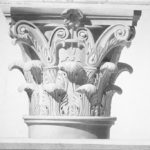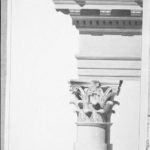ἐν μέσῳ δὲ τῆς ἀγορᾶς ἐστιν Ἀθηνᾶ χαλκῆ: τῷ βάθρῳ δὲ αὐτῆς ἐστι Μουσῶν ἀγάλματα ἐπειργασμένα. ὑπὲρ δὲ τὴν ἀγοράν ἐστιν Ὀκταβίαςναὸς ἀδελφῆς Αὐγούστου βασιλεύσαντος Ῥωμαίων μετὰ Καίσαρα τὸνοἰκιστὴν Κορίνθου τῆς νῦν.
Pausanias. Pausaniae Graeciae Descriptio, 3 vols. Leipzig, Teubner. 1903.
The Annenberg CPB/Project provided support for entering this text.
This paragraph appears to refer to what the excavators named Temple E. Yet as Hutton points out, “Octavia is not known to be the recipient of major cult honors anywhere in the Greek east, and there is certainly no known reason why the Corinthians would honor her with their most opulent temple” (Hutton, Describing Greece 168). If Pausanias is not correct in identifying the temple as Octavia’s, to what divinity was it dedicated? Since Corinth is the Roman capital of Achaea, Walbank (BSA 84 [1989] 361-94) and Torelli (in Knoepfler and Pierart 2001) have argued that Temple E could be the Capitolium, the home of the Capitoline triad Jupiter, Juno, and Minerva.

